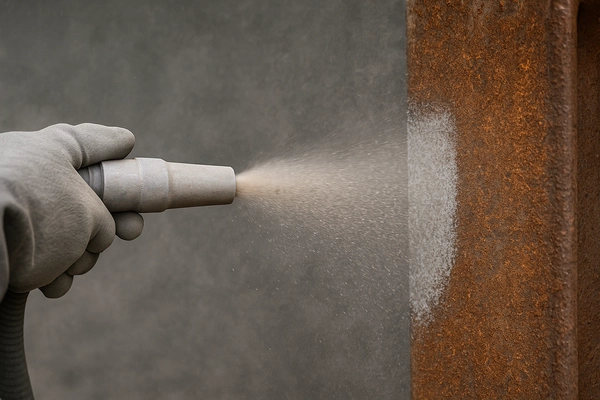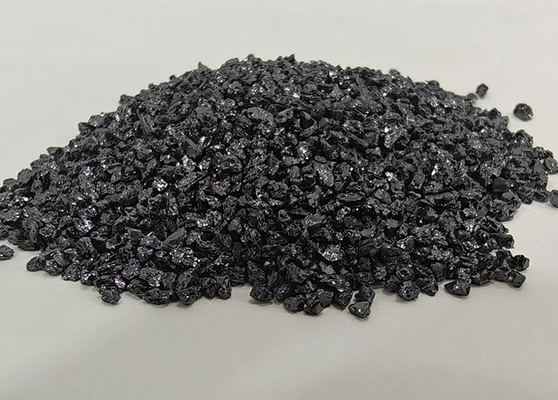
Abrasive blasting is a critical process in industries like manufacturing, construction, and automotive, used to clean, etch, or prepare surfaces. Selecting the right grit size ensures efficiency, safety, and optimal results. In this article, we’ll explore how to choose the appropriate grit size for your abrasive blasting needs, helping businesses improve productivity and quality.
What is Abrasive Blasting?
Abrasive blasting, often called sandblasting, involves propelling abrasive materials at high speeds to remove contaminants or alter surface textures. It’s essential for preparing surfaces for painting, coating, or welding. The process uses various media, such as sand, glass beads, or aluminum oxide, each with different grit sizes.
Grit size refers to the diameter of the abrasive particles, measured in mesh or microns. A smaller grit size means finer particles, while a larger size indicates coarser ones. Choosing incorrectly can lead to surface damage, increased costs, or poor adhesion of coatings.
Understanding Grit Size and Its Importance
Grit size is categorized using standards like the Mesh system, where a lower number equals larger particles. For example, 20 grit is much coarser than 120 grit. This measurement directly affects the blasting profile, which is the roughness left on the surface.
The importance of selecting the right grit lies in achieving the desired surface finish. Fine grits produce a smooth surface ideal for delicate materials, while coarse grits are better for heavy rust removal. Incorrect choices can waste materials, extend project timelines, and compromise safety.
How Grit Size is Measured
Understanding these measurements helps in comparing products from different suppliers, ensuring consistency in foreign trade and global operations. You can see our full grit size chart here for reference.
Grit sizes are typically measured using the U.S. Mesh standard or FEPA (Federation of European Producers of Abrasives). In the Mesh system, particles passing through a screen with a specific number of openings per inch define the size. For instance, 80 grit means particles pass through an 80-mesh screen.
Other systems, like microns, provide more precise measurements for specialized applications. Understanding these measurements helps in comparing products from different suppliers, ensuring consistency in foreign trade and global operations.
Key Factors to Consider When Selecting Grit Size
Selecting the right grit size involves evaluating several factors based on your project requirements. Start by assessing the substrate material, as softer materials like aluminum need finer grits to avoid damage, while harder surfaces like steel can handle coarser options.
Another factor is the desired surface profile. If you need a rough texture for better paint adhesion, opt for medium to coarse grits. For polishing or finishing, fine grits are preferable. Always consider the blasting equipment’s capabilities, as some machines perform better with specific sizes.
Material of the Substrate
The substrate’s hardness and thickness play a crucial role. For fragile materials like glass or plastic, use grits finer than 100 mesh to prevent pitting or cracking. In contrast, for robust metals like cast iron, grits between 30 and 60 mesh work well for aggressive cleaning.
In B2B scenarios, suppliers often provide grit recommendations based on material types. This ensures compatibility and reduces the risk of rework, which can be costly in international trade.
Project Goals and Surface Finish
Define your project goals early. If the aim is surface preparation for coatings, a medium grit like 50-80 mesh creates an ideal anchor pattern. For deburring or edge rounding, finer grits under 100 mesh offer precision without altering the part’s dimensions.
Achieving the right finish also impacts long-term durability. In foreign trade, where products are exported, proper grit selection ensures compliance with international standards like ISO 8501 for surface preparation.
Blasting Equipment and Pressure
Your equipment’s nozzle size, air pressure, and feed rate influence grit performance. High-pressure systems can handle coarser grits efficiently, while low-pressure setups require finer particles to avoid clogging. Always match grit size to the machine’s specifications for optimal results.
In a B2B context, consulting with equipment manufacturers can provide insights into compatible grits, helping businesses streamline their supply chains and reduce downtime.
Types of Abrasives and Their Recommended Grit Sizes
Different abrasives offer unique properties, and each has ideal grit sizes for specific tasks. Common types include silica sand, garnet, and steel shot. Understanding these helps in making informed decisions for various applications.
For general cleaning, silica sand with 40-80 grit is popular due to its affordability. However, for eco-friendly options, glass beads in 50-200 grit range are preferred for their recyclability and minimal environmental impact.
Sand and Silica-Based Abrasives
Sand abrasives typically range from 16 to 100 grit. Coarse sizes (16-30 grit) are used for heavy-duty removal of scale or paint from large structures. Finer sizes (80-100 grit) suit automotive parts for a smoother finish.
In foreign trade, silica-based abrasives must comply with regulations like OSHA standards to avoid health risks from dust. Selecting the right size minimizes waste and ensures sustainable practices.
Metallic Abrasives like Steel Shot
Steel shot abrasives are available in sizes from S110 (fine) to S780 (coarse). They’re ideal for peening applications, where 0.3-1.0 mm sizes enhance metal fatigue resistance. For shot blasting, grits around S330 are commonly used for wheel preparation.
Businesses in manufacturing often choose metallic abrasives for their durability and reusability, reducing costs in high-volume operations and international shipments.
Non-Metallic Abrasives: Garnet and Glass Beads
Garnet abrasives, with grits from 30 to 120, are sharp and effective for cutting through coatings. Finer grits (80-120) are great for precision work on electronics or aerospace components. Glass beads, ranging from 40 to 300 grit, provide a satin finish without embedding residues.
These options are favored in B2B trade for their versatility and lower health risks, making them suitable for industries with strict environmental regulations.
Best Practices for Grit Selection in Various Applications
In practical applications, testing is key. Conduct small-scale trials to evaluate how different grit sizes perform on your materials. This step helps avoid costly errors in production environments.
For shipbuilding, coarse grits remove marine growth effectively, while in electronics, ultra-fine grits ensure delicate component cleaning. Always document your selections for future reference and supplier negotiations.
Aerospace and Automotive Industries
In aerospace, grits between 100 and 220 are used for turbine blade finishing to meet tight tolerances. Automotive applications often employ 60-100 grit for rust removal on chassis, ensuring parts meet safety standards.
B2B companies benefit from partnering with suppliers who offer customized grit options, enhancing efficiency in global supply chains.
Construction and Infrastructure
For concrete surfaces, 20-50 grit abrasives prepare for sealants. In bridge maintenance, coarser grits handle corrosion, while finer ones refine the surface for repainting. Proper selection extends structure longevity and reduces maintenance costs.
International projects require grits that align with local regulations, making informed choices vital for trade compliance.
Common Mistakes to Avoid
One common error is using a one-size-fits-all approach, which overlooks material specifics. Always tailor grit size to the job to prevent undercutting or insufficient cleaning.
Another mistake is neglecting safety. Fine dust from certain grits can pose health risks, so select sizes that minimize airborne particles and use proper ventilation.
Frequently Asked Questions
Below are answers to common queries about selecting grit size for abrasive blasting.
What is the difference between coarse and fine grit? Coarse grit removes material quickly but leaves a rough surface, while fine grit provides smoother finishes for detailed work.
How do I determine the right grit for my project? Assess the substrate, desired finish, and equipment. Start with manufacturer guidelines and test samples.
Can I reuse abrasive grit? Yes, depending on the type. Metallic grits like steel shot can be recycled multiple times, but non-metallic ones may degrade after one use.
What happens if I use the wrong grit size? It can damage the surface, increase waste, or fail to achieve the required profile, leading to rework and higher costs.
Are there eco-friendly grit options? Absolutely. Garnet and glass beads are recyclable and less harmful, making them ideal for sustainable B2B operations.
Conclusion
Need Help Choosing the Right Grit Size?
Our experts can recommend the ideal abrasive grade for your blasting, cleaning, or surface preparation needs.
Get a Quote or Technical SupportIn summary, selecting the right grit size for abrasive blasting is essential for achieving efficient, high-quality results in various industries. By considering factors like substrate material, project goals, and equipment compatibility, businesses can optimize their processes, reduce costs, and ensure compliance in foreign trade. Always prioritize testing and safety to enhance productivity and longevity of your operations.
Request a Quote or Sample
Popular Products
Grünes Siliziumkarbid
View DetailsSchwarzes Siliziumkarbid
View Details